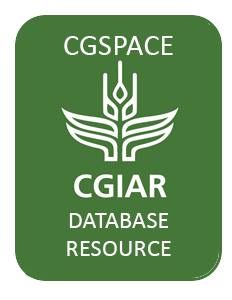Mission
To reduce hunger and poverty, and improve human nutrition in the tropics through research aimed at increasing the eco-efficiency of agriculture.
People
CIAT’s staff includes about 200 scientists. Supported by a wide array of donors, the Center collaborates with hundreds of partners to conduct high-quality research and translate the results into development impact. A Board of Trustees provides oversight of CIAT’s research and financial management.
Values
- Shared organizational ethic
- We respect each other, our partners, and the people who benefit from our work. We act with honesty, integrity, transparency, and environmental responsibility in all of our joint endeavors.
- Learning through partnerships
- We work efficiently and pragmatically together and with partners. Considering our diversity to be a key asset, we adapt readily to change and strive to improve our performance through continuous learning.
- Innovation for impact
- We develop innovative solutions to important challenges in tropical agriculture, resulting in major benefits for the people who support, participate in, and profit from our work.
Members:
Resources
Displaying 96 - 100 of 958Know what drives the adoption of climate-smart agriculture across different scales
Recognizing successful climate-smart agricultural (CSA) practices is not enough for them to be adopted at scale.
At many sites, government or development-led interventions to promote CSA practices face low adoption rates or are not adopted at all.
Data shows that CSA adoption depends on drivers and constraints beyond the CSA practices. Blanket adoption of a specific intervention should never be assumed: the adoption of CSA practices is usually patchy because of many conditions.
Earthworm communities in arable fields and restored field margins, as related to management practices and surrounding landscape diversity
El CIAT en Centroamérica: Ciencia con impacto
Total and heterotrophic soil respiration in a swamp forest and oil palm plantations on peat in Central Kalimantan, Indonesia
Heterotrophic respiration is a major component of the soil C balance however we critically lack understanding of its variation upon conversion of peat swamp forests in tropical areas. Our research focused on a primary peat swamp forest and two oil palm plantations aged 1 (OP2012) and 6 years (OP2007). Total and heterotrophic soil respiration were monitored over 13 months in paired control and trenched plots. Spatial variability was taken into account by differentiating hummocks from hollows in the forest; close to palm from far from palm positions in the plantations.
Agriculture intelligente face au climat au Sénégal
Ce document décrit le Sénégal sur le plan de l'Agriculture Intelligente face au Climat (AIC). Le concept d’agriculture intelligente face au climat (AIC) traduit l’ambition d’assurer une meilleure intégration du développement de l’agriculture et de la réactivité face au climat. Il vise à assurer la sécurité alimentaire et atteindre les objectifs de développement plus larges dans un contexte


